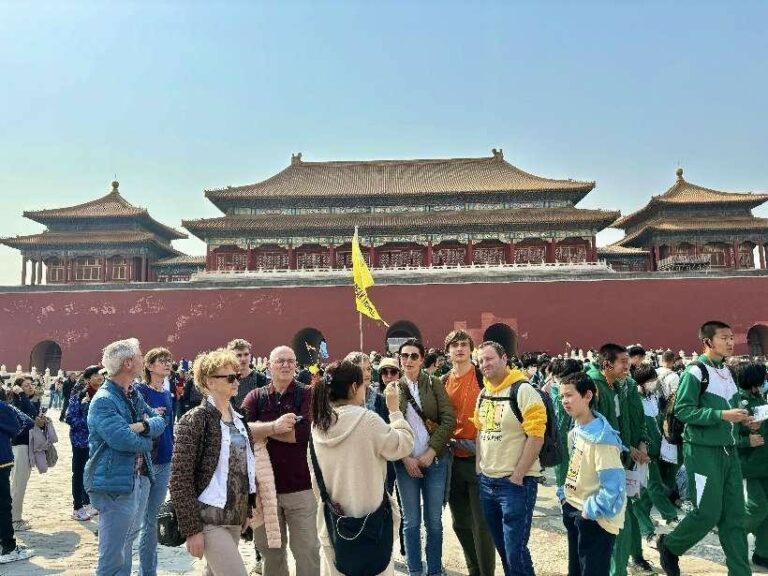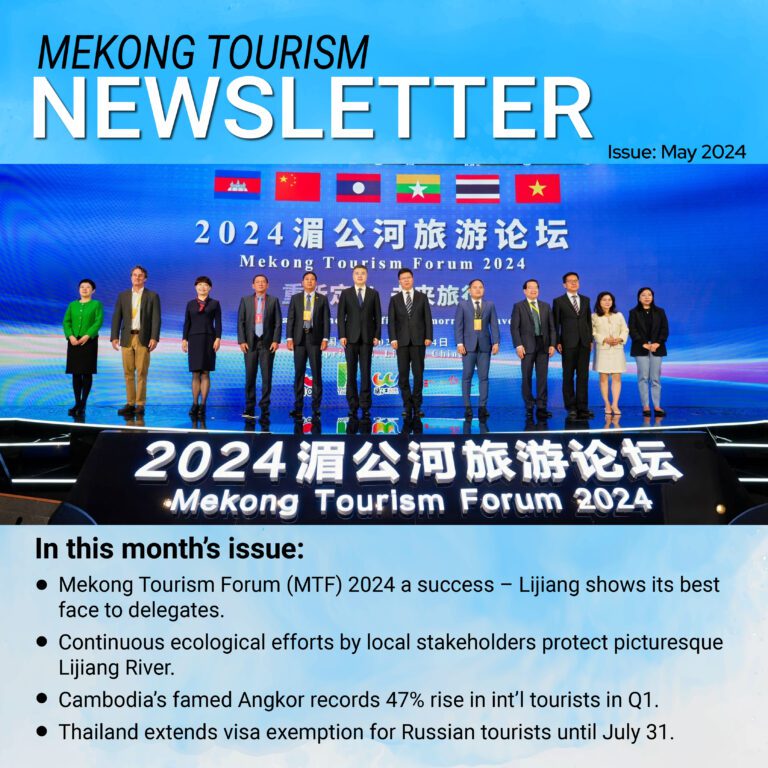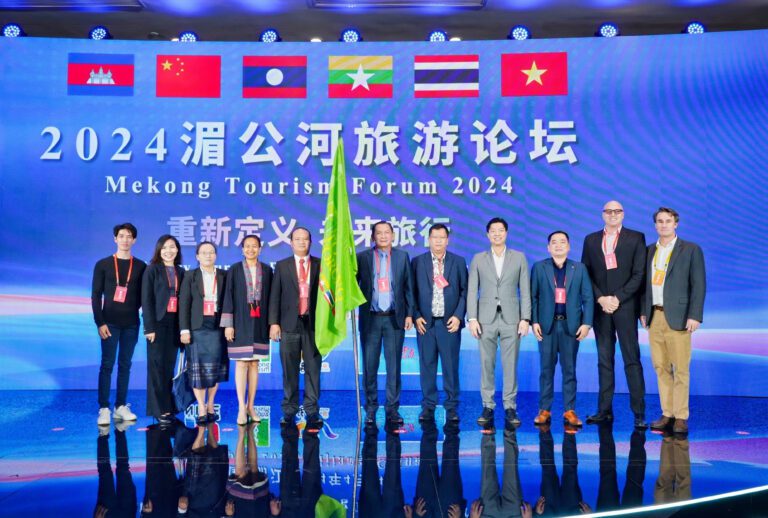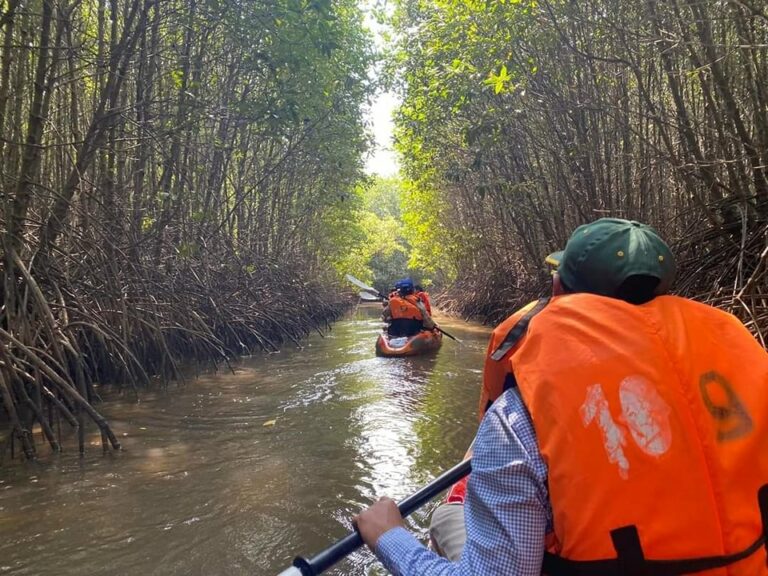“Eating the same meal and spending the same money” embodies the communal spirit of the Tay people. To see it in action, you only have to visit the Thai Hai Ethnic Village, which was recently honoured as one of the world’s Best Tourism Villages by the UN World Tourism Organization.

Located in a 70-hectare site in Thai Nguyen Province’s Thinh Duc commune, around 60km north of Ha Noi, the Thai Hai Ethnic Village consists of 30-plus traditional Tay stilt houses and four generations of Tay families living within.
The families that live here preserve Tay traditions, from the food they eat to the crafts they create. This is not just a show for the tourists: this is an active effort to preserve an ancient tradition, by building a community that embodies those traditions. The cultural authenticity has helped transform the village into a Northern Viet Nam ecotourism hotspot, with space for 2,000 day visitors and 500 homestay guests.
The village’s mission is upheld by its village head, Nguyen Thi Thanh Hai, whose hard work transformed this sleepy Tay village into a bustling ecotourism site and Tay cultural heartland.
“I not only want to keep this culture for my community, but also want to share this culture with many people, especially tourists so that Tay ethnic culture will not be forgotten,” she explains, in a fascinating conversation that we’re publishing below.
This interview has been edited for length and clarity.
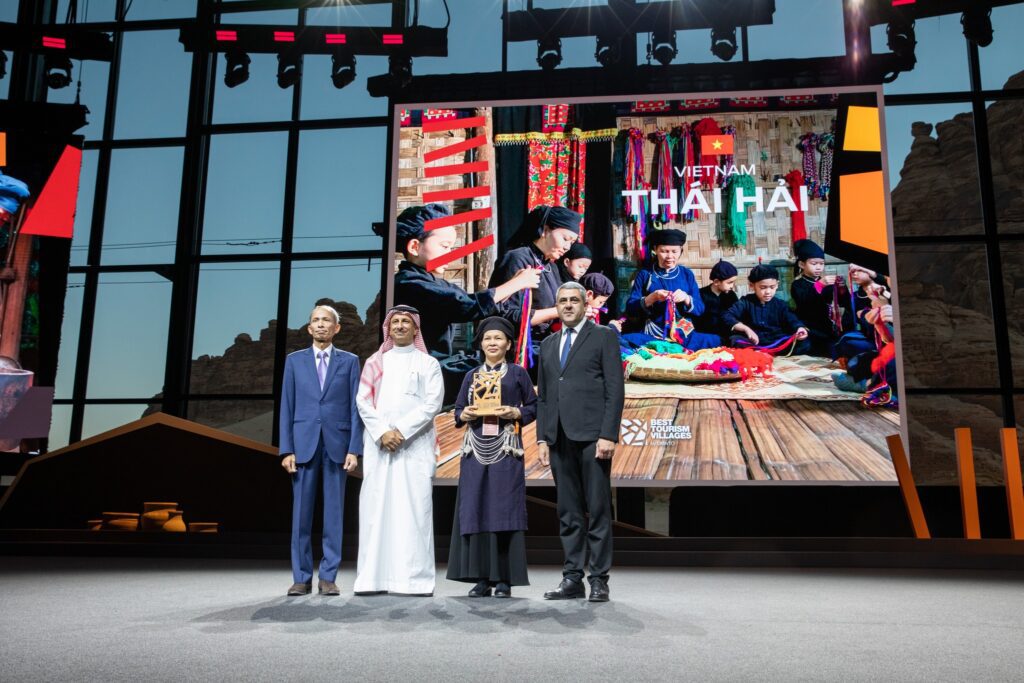
How did Thai Hai eco-tourism village start? What inspired you?
I am a Tay, I was born and raised in my family’s Tay stilt house. I was nurtured and protected by the Tay culture, whose traditions will live forever in my heart. That is the reason for my ambition to build a Tay village that preserves the culture and customs of the Tay ethnic people. Later, my relatives and friends saw my enthusiasm and determination, and joined me.
I started by recovering traditional stilt houses that were being demolished, and regenerating natural forests in the wasteland area. The funding sources all came from my personal assets; I personally loaned money that paid for construction work of the village and supported the daily expenses for everyone who joined me in the early days.
20 years later, Thai Hai village today has four generations living together, more than 30 stilt houses preserved in a green forest landscape, and most specially a restored Indigenous culture.
Although there were many difficulties and challenges when we built the village, I always had the support and companionship of the villagers and God gave me the strength to do it.
Why do you feel it’s important to create a showcase of Tay culture for tourists?
I believe God gave the Tay people our traditional culture to give as a gift to bring happiness to everyone. Ours is a culture with many humanistic aspects. Our people live close to and respect nature: in our village, we have revived a land from being abandoned and poor to a green area with rich flora and fauna.
Furthermore, our community lifestyle of “Work-Live-and-Share-Together” also brings great benefits to our four generations of Tay who live together at our villages, and there are many other interesting things about indigenous life and culture that we are still preserving today.
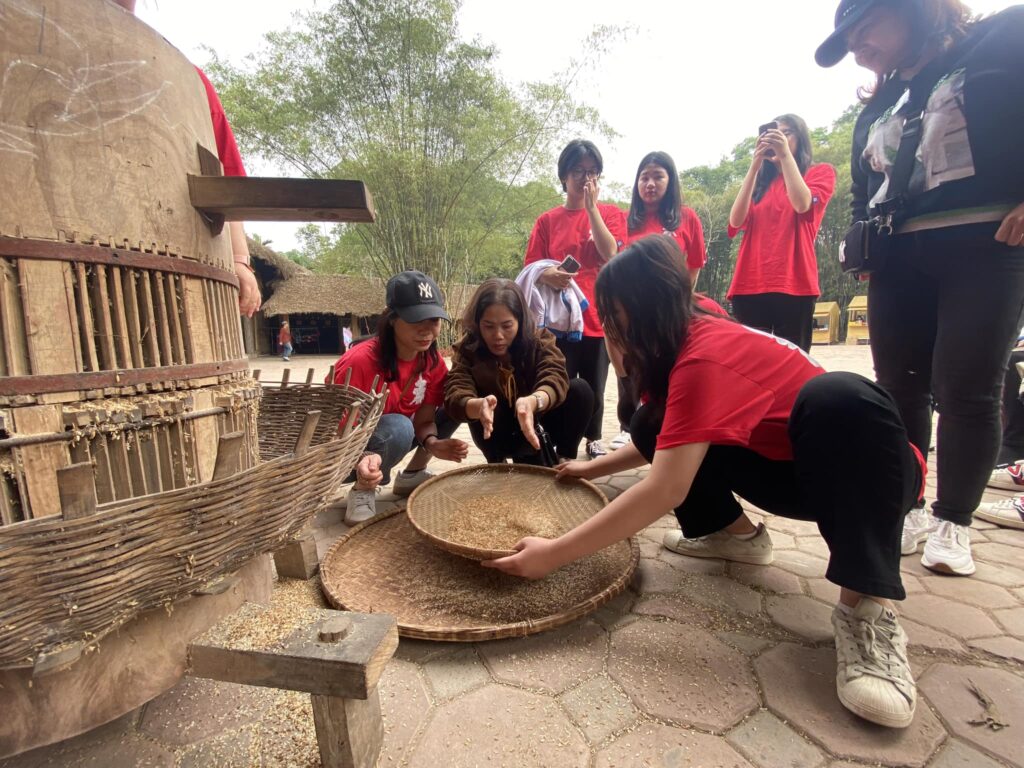
What cultural activities can tourists experience in the Village?
Coming to Thai Hai village, visitors will have a chance to explore and discover the culture of the Tay ethnic minority group here. They’ll get to experience the customs and rituals of the Tay ethnic group, and immerse themselves in the green nature.
They’ll also have moments of enjoyment and relaxation when resting in our ancient stilt houses, and dine on traditional Tay cuisine that brings an interesting, novel, and unique feeling to the trip of visitors.
The Village’s management is based on a family model. How does it work in practice?
In Tay culture, the village has a chief, the house has a host, and they orient the sustainable development for the whole community.
The remaining members each have their job and profession to dedicate to the village. However, with a community lifestyle, we live together like a big family: each member not only does their job well, but they also support and share the work of other members. So in addition to their own expertise and strengths, they also understand and can take on many other jobs, giving them a great advantage to develop the village in a sustainable way, where everybody benefits.
With the consensus and support of all village members, we “eat the same meal and spend one pocket of money”: the results are shared with the whole community. Individual needs are balanced with collective interests; this allows us to focus resources on improving lives, and bringing benefits for the whole community.
When is the best time to visit the Eco Tourism Village? What are the best Tay festivals that tourists can come and see?
Every month of the year has special days, following Tay traditional customs. Each season, we celebrate big festivals, each with its own characteristics that are an opportunity for tourists to have unique and interesting experiences in Thai Hai Village. For example (in the Lunar calendar): for Spring, Lunar New Year (Tet) and Long Tong Festival (festival to pray for new crops) in January, and Gratitude festival to the Water God in March. Gratitude festival to the God of Trees in May in summer, and Harvest festival “Com moi” to pay tribute to heaven and earth with a bountiful harvest in October in Autumn.
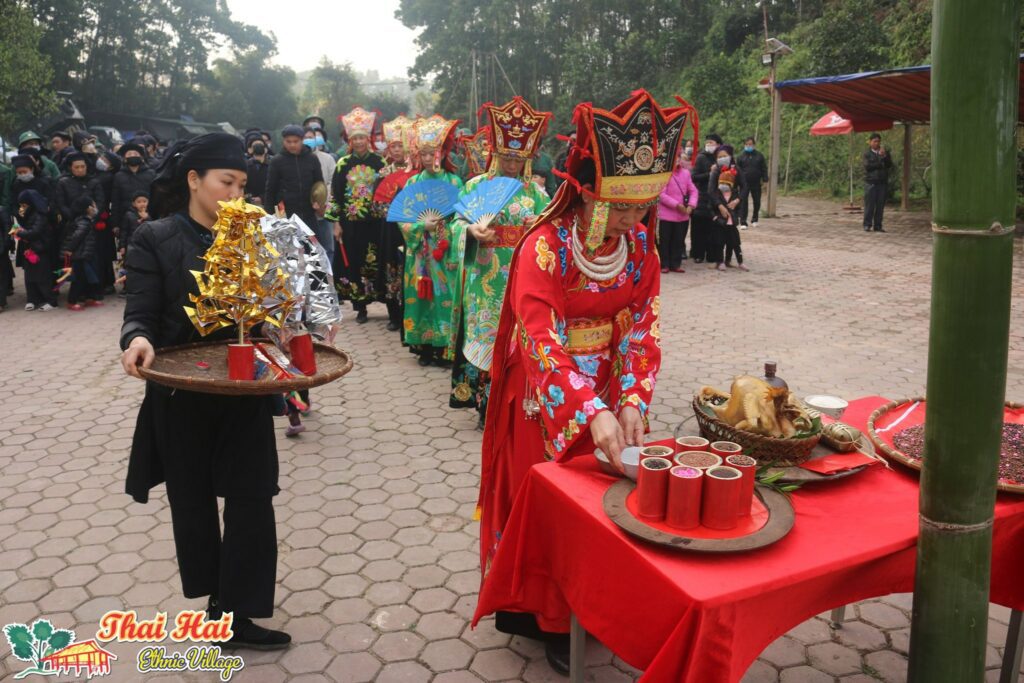
How do your organization and the government work together to promote community-based tourism?
As we built our village and created the community-based tourism product of Thai Hai, we received the support of the Vietnamese government’s agencies in terms of legal guidelines, paperwork procedures for the establishment of villages, recognition of local tourist attractions, operating permits and more.
In addition, tourism industry agencies from the Vietnam National Administration of Tourism, Department of Culture, Sports and Tourism of Thai Nguyen province, and tourism promotion agencies helped village to promote our products through official and mass media channels, bringing the Tay culture that we preserved get closer to the public.
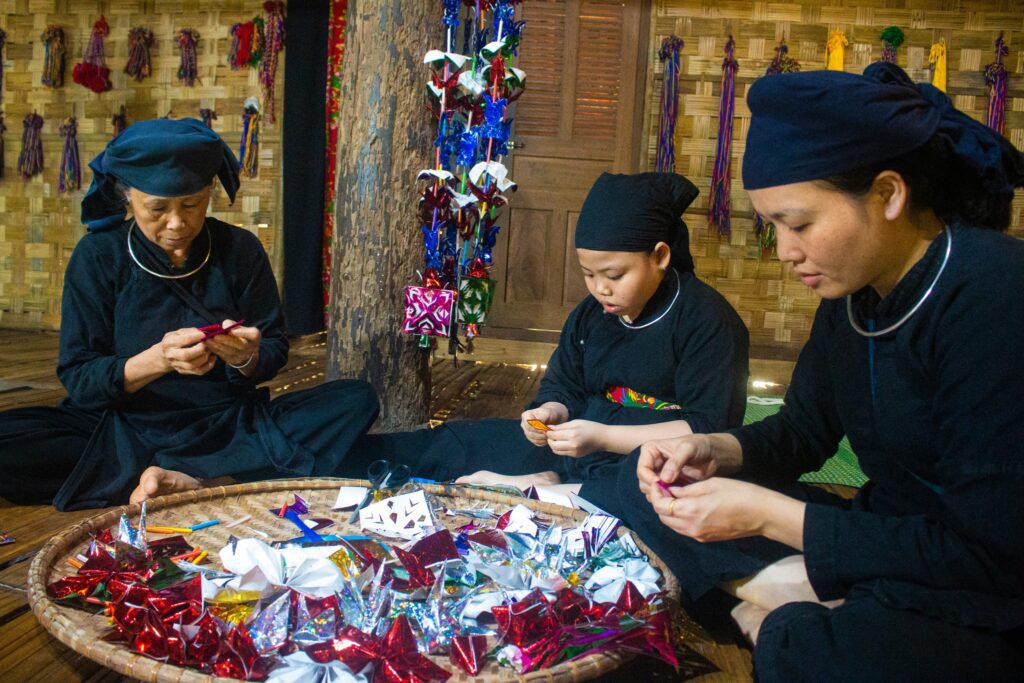
How does the Tay community in the Tourism Village directly benefit from tourism?
By connecting Tay ethnic culture with community-based tourism, we now have more financial resources to improve the lives of the villagers, continue to restore our forgotten cultural features, and bring a more special and complete cultural experiences to visitors when they come to the village.
In addition, local products made by the people here can be introduced to visitors (handicrafts, knitting, agricultural products, wine, tea, cakes, traditional medicines, etc.) that generate income, improve living standards, and develop the local economy.
Finally, the locals in the village now have stable jobs right where they live, because tourism creates enough jobs for locals and the local community in general.
How does the “Vuon Ao Chuong” farming model encourage sustainability in the village?
In our village, agricultural production using the “self-sufficiency” model has been implemented since the early days, to provide foods such as pork, chicken, duck, fish, or kinds of vegetables and fruits are raised and grown right on our farms, and fields; handmade products which are made from natural materials like bamboo and wood; and specialties such as wine, green tea, traditional medicine, cakes.
Firstly, this supplies food and necessities for the villagers’ daily needs. After the production is stable, this is also a source of food for the tourists’ meals we serve. Visitors can dine on our “farm to table” cuisine, or buy souvenirs and specialties with the cultural features of the Tay ethnic people.
The revenue from the sale of goods supports the village, allowing us to continue the work of cultural preservation. It also contributes to improving people’s livelihood, protecting them from economic fluctuations outside society and giving us a certain degree of independence.
For example, during the COVID-19 pandemic, the “garden-pond-barn” model has ensured that village locals were not too affected by the inflation affecting communities outside.
Secondly, the traditional production method still retains its characteristics according to the culture of the Tay people, which will nurture cultural life and pass it on to the younger generation.
All these factors contribute to the sustainable development of Thai Hai village’s life.
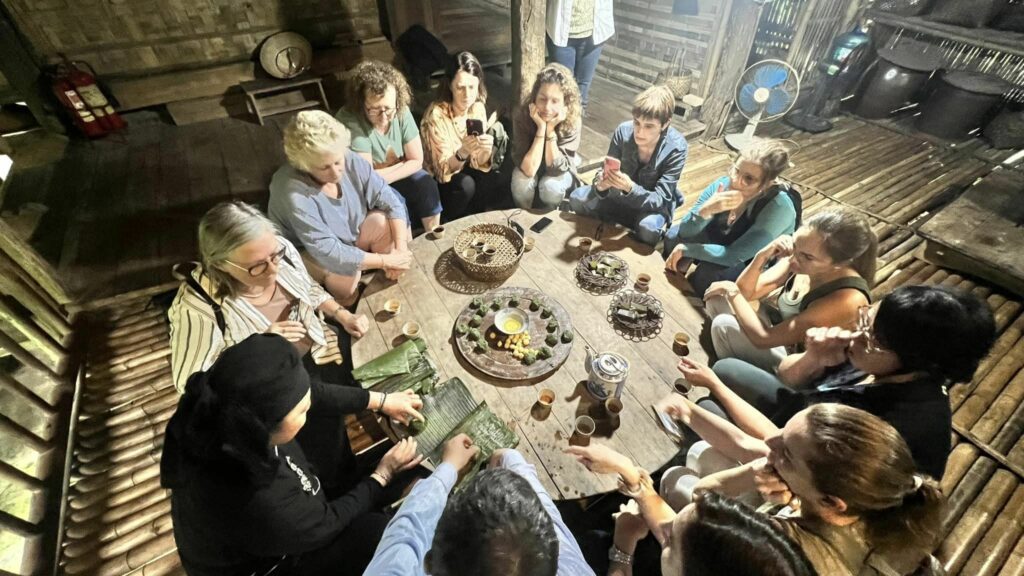
Thai Hai Village was recognized as the “Best Tourism Village” of 2022 by the UNWTO. How does that validate the hard work you have put in to create and sustain the village?
After nearly 20 years of efforts, Thai Hai village has gained local and national recognition as a typical tourist destination. In Southeast Asia, we won four ASEAN Tourism Awards, including the Sustainable Tourism and Community Tourism categories.
In addition, the heritage “Practices of Then by Tày, Nùng, and Thái ethnic groups in Viet Nam” (Then singing)- one of the typical cultural features representing the Tay people that we are preserving has been officially recognized by UNESCO on the Representative List of the Intangible Cultural Heritage of Humanity. And in 2023, our award for Best Tourist Village by UNWTO is really meaningful to our Village.
These are very valuable encouragements for me as well as for the whole Thai Hai village community. It’s a recognition from the world that our work (preserving, promoting, loving, and appreciating the old values of our Tay ethnic culture) is absolutely right. We did the right thing!
What future plans do you have for Thai Hai Ecotourism Village? Do you expect more tourists to come in the near future?
In the future, according to the expectation of Thai Hai village community, with all possible resources, we hope to completely restore all the aspects from the traditional culture of the Tay people from the past. We want to preserve and pass it down to the younger generation and provide to our beloved visitors more unique and special experiences and impressions when they have a chance to visit Thai Hai.
To find out more about Thai Hai Ethnic Village, visit their Facebook page facebook.com/sinhthaithaihai.
